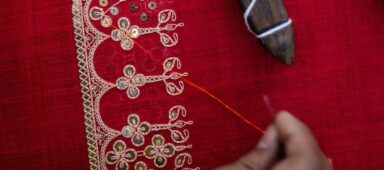Nangmyeon is awakening a new hunger across Korea, bringing together a divided people
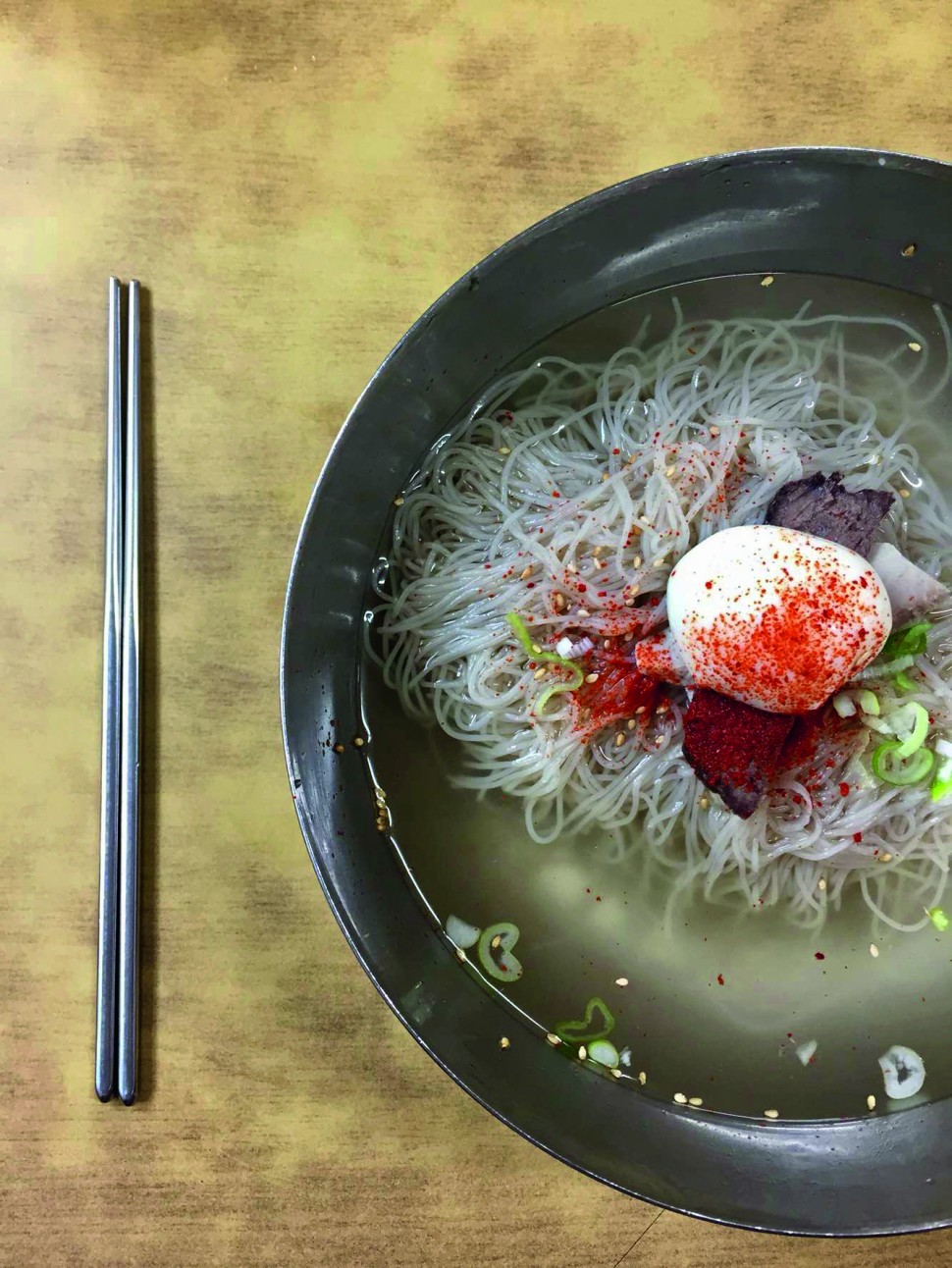
A man in a blue suit jacket stands on a grand wooden staircase overlooking the crowd. In one hand is a clipboard full of names — our names. In the other, a pink highlighter. On his hip is a walkie-talkie, which every now and then spews crackly messages in Korean.
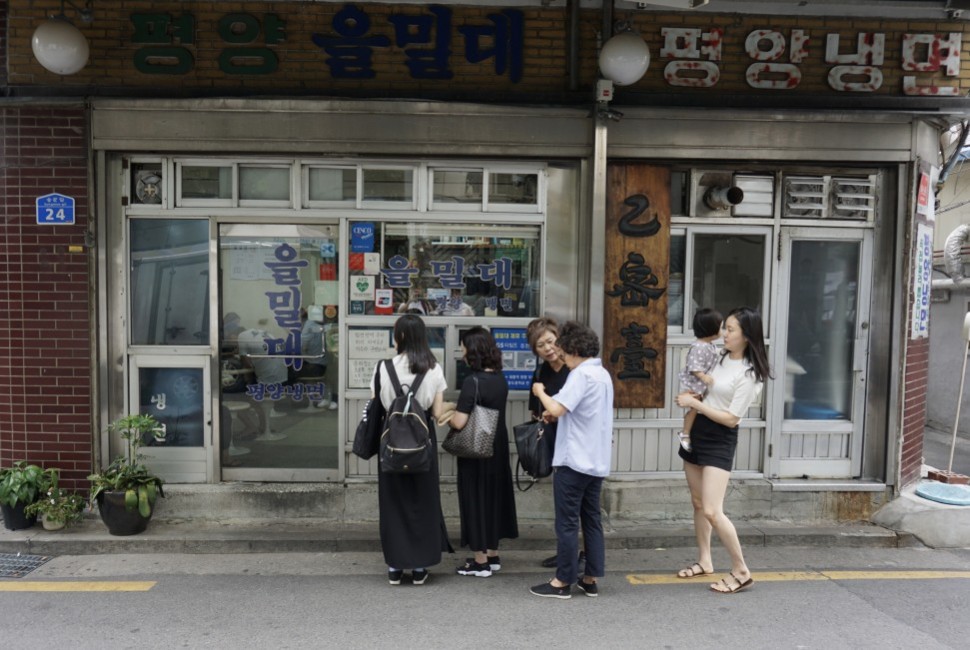
The crowd is dense, and it’s not getting any smaller. We’re all waiting in here, hot and impatient, for this well-dressed man to call us, to choose us from his list. I’m straining to hear him over the restless crowd, because I know what happens when you miss your name.
“Going once. Going twice …”
There is no third chance. Two calls, and your name is scratched away with pink highlighter. It’s a cutthroat business. The crowd knows the stakes. Finally, his lips start to move. A woman upstairs calls his walkie-talkie, and his eyes go to the list. He browses for the right name and starts to speak.
“Joshua?” he says, struggling with my foreign name. I throw up my hand, and he smiles and waves me toward the back. The crowd watches in envy as I go. A hostess with gentle eyes leads me to a polished wooden table overlooked by classical Chinese paintings. I sit down, relieved. It is finally time to eat nangmyeon.
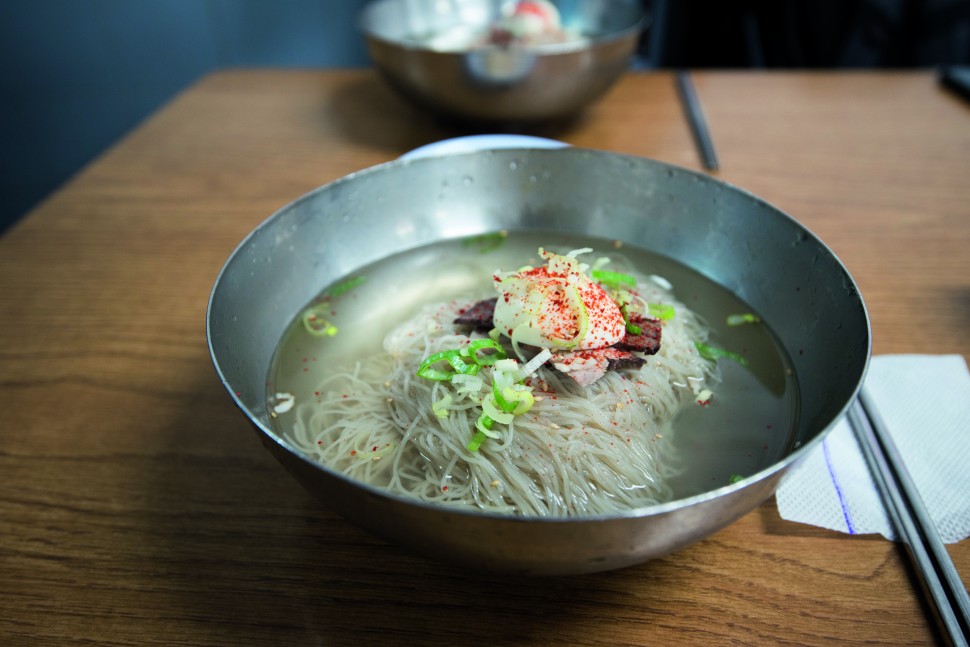
Korea’s answer to Japan’s ramen or Vietnam’s pho, these cold noodles are a subtle art. Thin chewy wheat noodles (or sweet potato noodles, depending on the region), slices of beef, half a boiled egg, a couple of julienned cucumbers and a few slices of Korean pear, all soaked in a tangy icy broth and served in a stainless-steel bowl. A dollop of mustard and a splash of vinegar are added at the table, and what you get is the perfect solution to Seoul’s blistering summer heat.
This might explain the hour-long lunch lines at Seoul’s best nangmyeon spots, but there’s more to it than that. In recent months, this dish has attracted the attention of the nation – and the hope that maybe a bowl of good noodles can bring a divided country together.
When Kim Jong-un came to South Korea in April, becoming the first North Korean leader to do so in nearly 60 years, he brought a few things with him: a chance at peace, an end to months of nerve-wracking tension, and a bowl of cold noodles.
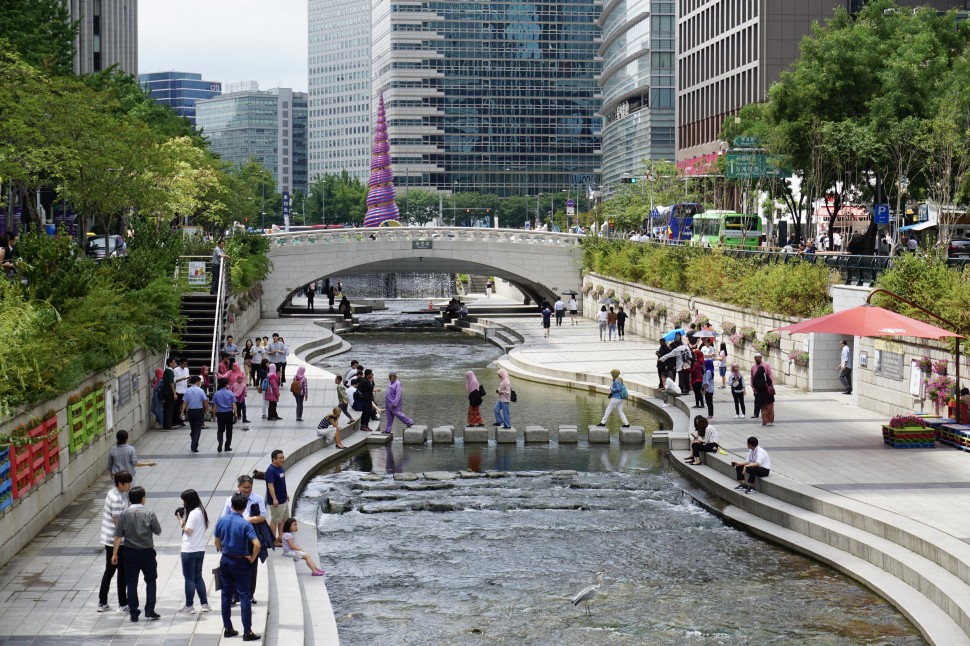
The Twitter-verse went wild when Kim brought with him a bowl of Pyongyang Nangmyeon, named after the North Korean capital where the dish originated. The hashtag #PyeongyangNaengmyeon caught fire that day. Restaurants in Seoul selling the dish were lined up down the block. Office workers dedicated their lunch hours to it, coming in droves to celebrate the historic day one slurp at a time.
“Now there are way more people coming to our shop,” said Jung-sook Hong, a third-generation nangmyeon shop owner, a smart-looking woman with curly black hair and dark-rimmed glasses. “People thought, ‘What is that? We have to try it, too.’”
Fortunately, the dish is not hard to find. Most of Seoul’s best nangmyeon restaurants are scattered along the Cheongyecheon, a historic stream and now a popular tourist site running through the heart of Seoul. It’s like the Fifth Avenue of great noodle shops, and it didn’t happen by chance. “During the Korean War, many North Koreans escaped and came here,” said Hong. “There was a market here, and a stream. The people had nothing to do, so they started making noodles.”

Hong’s parents were part of that crowd. They fled the North, bringing their food knowledge with them, and have been keeping it alive ever since, passing down the recipe from generation to generation without ever once writing it down. “It’s all in my head,” Hong says, pointing a finger at her dark curls. From behind her glasses, she’s smiling. “The whole recipe. We never wrote it down. I just learned it from watching my mother.”
Even as the lines outside her restaurant grow, she’s maintaining the decades-old recipe for these noodles, which have a controversial history of their own.
Everyone is aware of Japan’s geisha, the talented women who, from behind white painted faces, hypnotise audiences with their musical and dancing charms. But Korea had its own version of geisha, known as gisaeng. They worked in high-end restaurants around the country called yojeong, entertaining royalty and the country’s uber-rich. This is where nangmyeon first became popular in the 1920s, starting in Pyongyang, the North Korean capital where it’s cold enough to grow the buckwheat and to find ice for the broth – and where the largest schools for gisaeng were located. The gisaeng have all but disappeared, but great restaurants have held on to the same flavour all these decades.
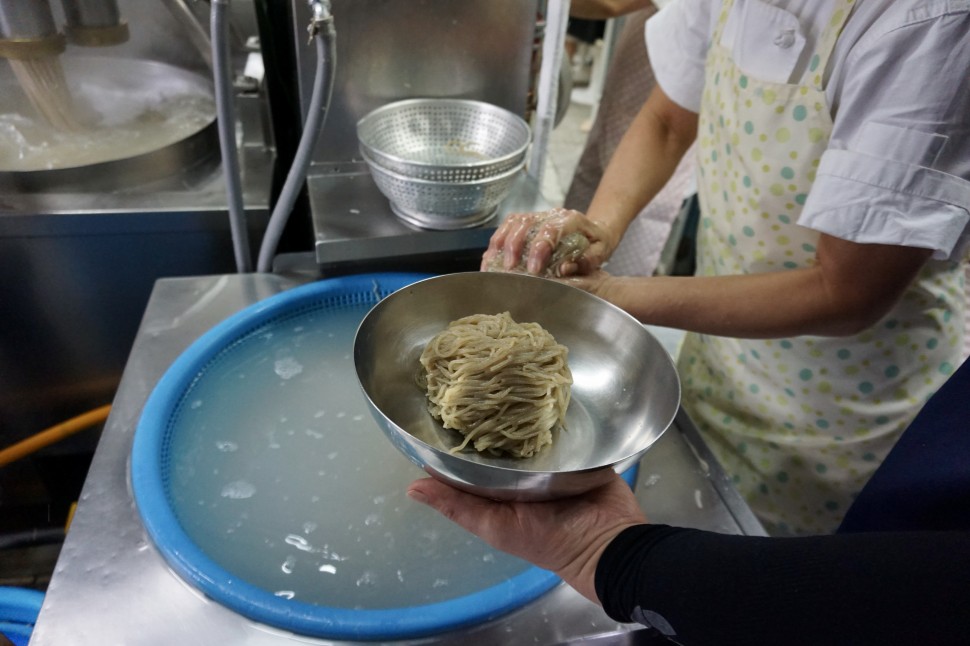
“Our mother is still alive,” said Hong. “So we’re trying to keep the flavour just the way she started making it.”
Trouble is, this isn’t the same world her parents found when they came to Seoul those 60-plus years ago. Farming has changed – and so has the supply chain. There’s hardly any buckwheat left in South Korea, so now she orders from China. With international shipping and modern farming, that hometown flavour is harder and harder to maintain. “We grow more crops, we grow bigger crops, so the flavour is slightly different now,” she says, showing me with her hands and a rattling voice just what she means. “A little different.”
Tastes in Korea have changed as well. In a generation where salty, spicy, even cheesy foods have taken over the menus, the subtle flavors of nangmyeon are a tough sell. That could be why until recently, nangmyeon never really caught on with the younger crowd. These cold noodle restaurants tended to be full of men with fedoras and women with curly perms.
Daniel Gray, who runs Seoul Eats, a food website and tour company in Seoul, says part of it was nostalgia, a “longing for the past” that drew the older crowd. But things have changed recently. Ever since Kim came to the South, offering noodles as a gesture of good faith, nangmyeon restaurants have found a more youthful glow. Girls in office attire take their lunch breaks here. Young men in suits wait in the heat for a table. They endure the line-ups, maybe even enjoy them. It’s all part of the excitement of eating something coveted, something that is not only delicious but also has a meaning behind it. “It is a hope for unification, and belief that Korea is and will be ‘one country’,” Gray says of the new crowds.
Could a bowl of cold noodles really help unite a country? Maybe that’s asking too much, but it’s not impossible to think they could play a part. Good food is known for bringing even bickering relatives to the same table. And if you can slurp cold noodles together, there’s no telling where things might go. A bit of grilled beef, a shot or two of soju, and we might just find we’ve got more in common than we thought.

